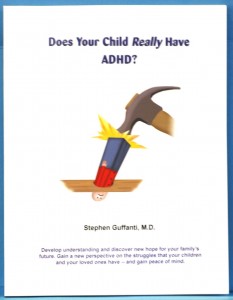Children’s Learning Styles: What Does It Feel Like to be a Kinesthetic Learner
 Author and physician Stephen Guffanti has modified a chapter from his book Does Your Child Really Have ADHD and helps you to understand what it feels like to be a kinesthetic learner:
Author and physician Stephen Guffanti has modified a chapter from his book Does Your Child Really Have ADHD and helps you to understand what it feels like to be a kinesthetic learner:
When our daughter was 5, I developed for our home school the following physics lesson to teach her and a 6 year old friend Newton’s three laws of motion.
Now, in my talks to parents, I lead them through this activity so they can actually experience what it feels like to be a kinesthetic learner.
Here is my Newton’s three laws of motion lesson: (Parents: I recommend you try this with your child, or lead pairs of children through this)
Step 1: First, move the furniture needed to clear a space about 6 feet square for each pair participating. Get on the floor, sitting back-to-back with another person. Link your arms at the elbows. Now, staying linked, try to stand up together.How hard is it to do that? Notice it is easier to just sit there. That’s the first law of motion – Inertia: a body at rest tends to stay at rest! (Ever try to slow your kids down when they are running? That is the other half—a body in motion tends to stay in motion.)
Step 2: Next, ask this: Which way did you push your feet to go up? (Some may say “Up.” Have them repeat the process, putting their feet in the air and pushing up.) Correct answer: You pushed down to go up.
That’s the second law of motion: For every action, there is an equal and opposite reaction. The second half of this second question was that you also pushed forwards to go backwards. Why didn’t you go backwards? Because your partner was pushing in the opposite direction.
Step 3: Now ask this: If one partner is much smaller, who has to push harder, the big person or the little person? Test it and see! The answer is the little person. This is Newton’s third law: Force equals mass (size of the person) times acceleration (push).
 |
Bette FetterFounder and CEO of Young Rembrandts and Author of Being Visual |










